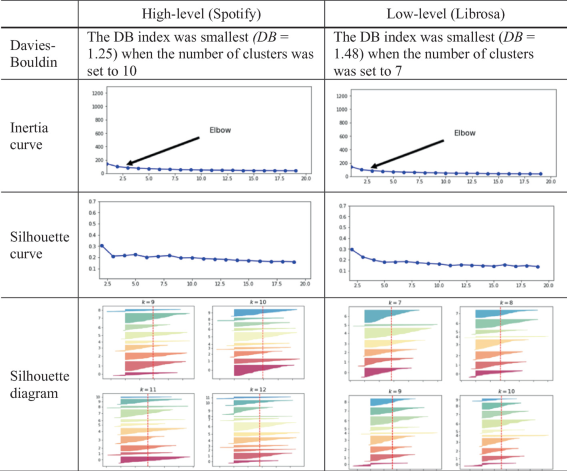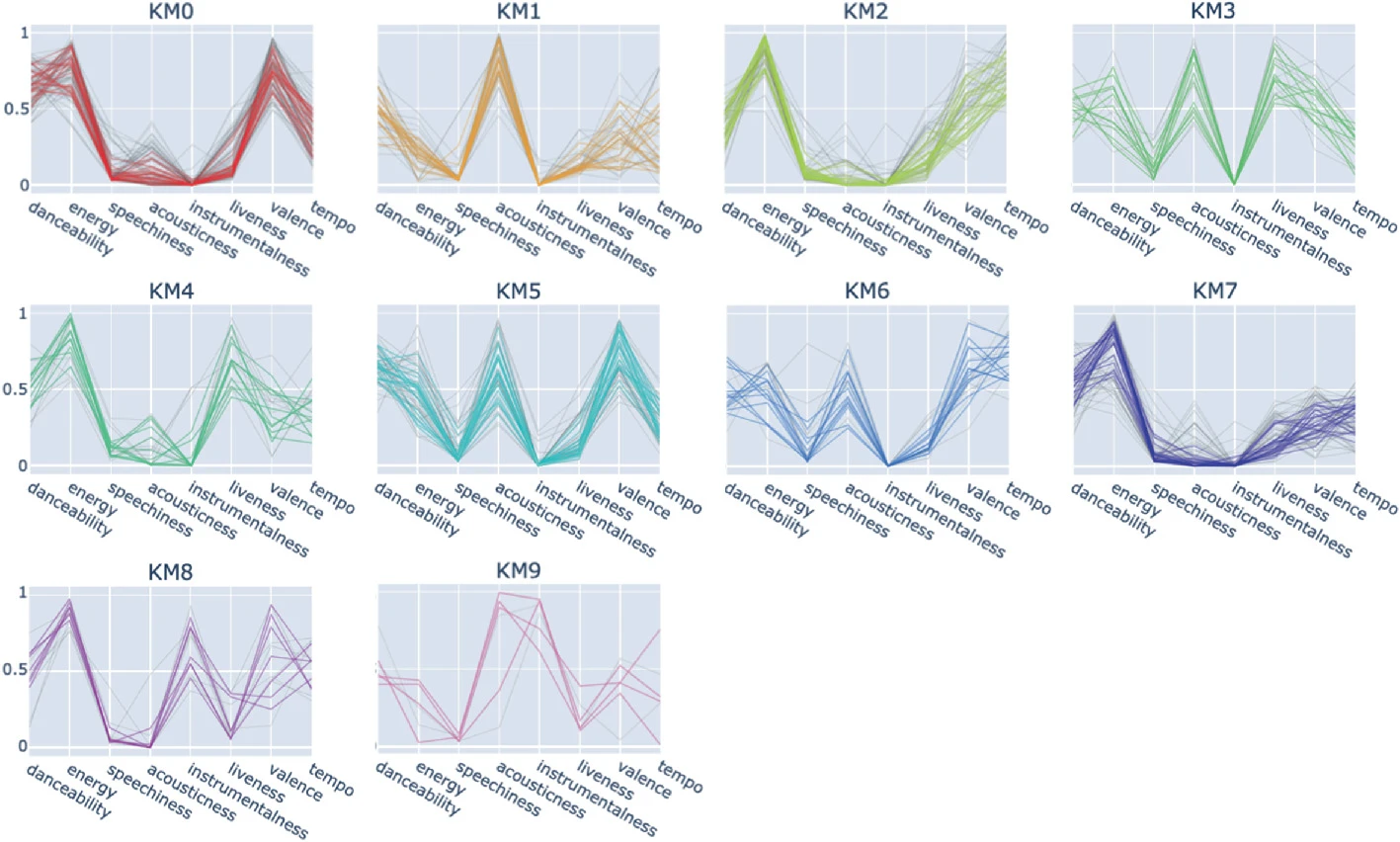Using k-Means Clustering to Classify Protest Songs Based on Conceptual and Descriptive Audio Features
- Yanru Jiang ,
- Xin Jin
in Culture and Computing, Lecture Notes in Computer Science
Published by Springer, Cham | 2022, Vol 13324
ISBN: 978-3-031-05434-1
Protest music is a phenomenal and widely circulated form of protest art in social movements. Previous protest music research has extensively focused on lyrics while ignoring other musical features that also contribute to the role of protest music in social movements. This study fills a gap in previous research by converting 397 unstructured musical pieces into structured music features and proposing a k-means clustering analysis to categorize protest songs based on both high-level conceptual features collected from Spotify and low-level descriptive audio features extracted via Librosa. The Davies–Bouldin index, inertia curve, Silhouette curve, and Silhouette diagram were the main measurements used to compare model performance. An innovative threshold filtering approach (optimizer area) was used to label 128 protest songs. Through a bottom-up folksonomy approach to music classification, this study overcomes the limitations of traditional genre classification by introducing other high-level features (e.g., energy, danceability, instrumentalness) and their roles in determining protest music categories.
Table 1. Comparison of four measurements used to evaluate clustering model performance

Fig. 3. Distribution of high-level music features by cluster. Gray curves indicate music with feature values outside the optimizer area.

![]()
